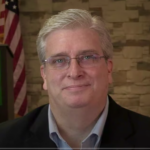AUSTIN–Researchers at the Heartland Institute, a Chicago-based free-market think tank with an office in Austin, today responded to the Back to Basics PAC’s recently released web video on insurance. The video is available at: http://www.youtube.com/watch?v=C0_YJI0OwjU.
“Back to Basics is perfectly right to criticize the Perry administration’s policy record on insurance. More insurance reform to drive Texas in the right direction is needed to protect consumers’ interests,” says Julie Drenner, director of Heartland’s Texas Office. “But some context is helpful in evaluating the ad’s claims.”
Back to Basics: Homeowners insurance rates have increased 76 percent during Perry’s time in office.
Heartland: Back to Basics is essentially correct (although rates increases during his early time in office were approved under the previous administration), but very little of the rate increase has much to do with Perry’s actions. First, inflation—although tame in recent years—is responsible for about a quarter of the increase. Constructions costs—a major determinant of homeowners insurance rates—have increased even more quickly than overall inflation. Second, after Hurricane Katrina, rates rose in all hurricane-prone areas as rating agencies and regulators required companies to keep more cash on hand to pay major claims. These factors, not Perry administration actions, are responsible for the bulk of the rate increases.
That said, several things the Perry administration has done do tend to increase rates for consumers. First, the state’s unusually burdensome rate approval system has discouraged new companies from opening up shop in the state. Second, the high risk of special taxes called assessments, resulting in part from the Perry administration’s management of the Texas Wind Insurance Association, has encouraged companies to ask for more rate hikes.
Back to Basics: Under Rick Perry, Texas insurance companies have made over $14 billion in gross profits.
Heartland: The Texas Department of Insurance (TDI) periodically releases the most current aggregate loss data for the insurance market. According to TDI’s loss chart, over the past decade the average combined ratio in Texas is 109. Since the regulatory reform of 2003, the number drops to 96.
Thus, during Perry’s tenure the insurance industry as a whole has spent $1.09 for every dollar it brought in. However, the reforms did help the companies make enough profit, yielding a modest four cents for every dollar spent, to allow them to continue to do business in Texas. Had they not done this, insurers would have left the state. For the past decade there has been great fluctuation in profitability, primarily due to major events such as hurricanes or mold infestation. Some years the industry made as much as $.40 for every dollar, but in others they spent as much as $.76 for every dollar.
Insurers do not set rates to recoup previous years’ losses; instead they set rates based on their prediction of future losses. Thus the best way to slow rate increases is to foster healthy competition in the marketplace and focus consumer protection on regulation of company solvency.
Back to Basics: Perry “Gutted Consumer Protection.”
Heartland: Under Perry, no significant changes were made to laws allowing the Texas Department of Insurance to investigate fraud on the part of insurance companies, explain insurance to consumers, or regulate their solvency. As such, the claim is not true.
Back to Basics may be referring to a largely cosmetic shift from a “prior approval” regulatory system for insurance to a “file and use” system. Under the previous system, insurers were required to get approval from the insurance department for all changes to their rates. Under the new system, insurers still must get insurance department approval but, in some cases, can make minor adjustments in rates without obtaining approval in advance. (The department can still disapprove them.) The Perry administration could do more to oversee insurance company solvency and help consumers understand insurance, but the manner of approving rate changes is largely cosmetic.
Julie Drenner, Heartland Institute Texas Director, can be reached at (512)799-5706 or [email protected]




